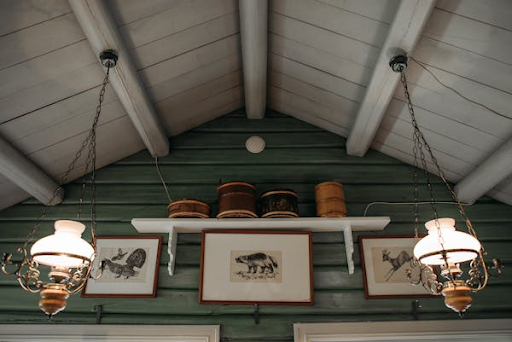Decorating a space goes beyond arranging furniture or choosing a paint color. It’s an opportunity to reflect personal style and bring nature closer without overwhelming the senses. A room with carefully selected accents inspired by the natural world can quietly shift its mood. The goal is not to recreate the forest but to allow its calm presence to settle in with ease. A subtle touch of wilderness can help any room feel grounded and more connected to what lies beyond the window.
The Beauty of Wildlife Sketches
Bringing the outdoors inside doesn’t need to be dramatic. Pencil sketches and ink drawings of animals offer a calm, detailed perspective that avoids overwhelming a room. Their simplicity lets them blend with modern or rustic styles, adding depth without distraction. These pieces often showcase everything from detailed fur textures to expressive eyes, quietly capturing the personality of each creature. Somewhere in the middle of a piece featuring wildlife art, a sketch of a fox mid-step or a resting owl can stir a quiet curiosity in anyone who passes by. When framed in neutral tones and hung with care, these works don’t demand attention—they reward it.
Natural Materials and Tactile Balance
A thoughtful way to bring a quiet sense of the outdoors into your home is through materials that speak through texture. Surfaces made from raw or minimally treated elements—such as unfinished wood, matte stone, or hammered metal—carry a grounding effect. A coffee table made from reclaimed oak, for instance, adds warmth not just through color but through the visible grain and natural imperfections that tell a subtle story. Slate trays, river stones in a bowl, or iron candle holders help create contrast against softer textures, allowing the eye and hand to move comfortably through the room.
Textiles deepen this connection. Wool throws with gentle weight, linen curtains that shift with a breeze, and handwoven cotton cushions offer a lived-in feel that invites rest. These natural fibers don’t just serve as accents; they shape how the space feels in motion—how it wraps around you during quieter moments. Paired with simple forms and a neutral palette, these tactile choices can soften the sharp edges of a space and make it feel more rooted, without a need for excess or ornament. It’s not about decoration for its own sake; it’s about building a quiet rhythm through materials that feel honest and enduring..
Color Palettes from the Earth
Neutral tones inspired by soil, sand, bark, and water form a quiet foundation for any space. Deep greens, muted browns, and soft grays can shift the tone of a room without narrowing its function. These colors encourage rest, patience, and reflection. Against such a backdrop, smaller accents—maybe a clay pot, a ceramic bird, or dried branches in a tall vase—gain more presence. The room breathes more easily when the palette follows the slow, steady pace of the natural world. It doesn’t need to be deliberate; it just needs to feel settled.
Bringing Life without Chaos
Adding a touch of wilderness doesn’t require clutter or excess. A room doesn’t need to be filled with objects to feel connected to nature. Instead, a few well-chosen pieces can suggest the outdoors with subtlety and care. A single branch placed on a mantle, a print of an elk above a desk, or a feather resting inside a glass frame can introduce a sense of the wild without overwhelming the space. These items offer small moments of interest and invite quiet observation. When thoughtfully arranged, they become part of the room’s rhythm, not a disruption to it. Pieces like these leave room for imagination—they hint at stories rather than telling them outright. A smooth river stone on a shelf, a framed sketch of a bird in flight, or a set of pinecones in a ceramic bowl can all carry meaning without taking over the space.
This measured approach makes the room feel calm and intentional. The wild, when brought indoors in quiet ways, becomes a presence rather than a performance. It gently reminds you of what’s outside the walls without demanding your attention. Instead of turning your home into a theme, it allows nature to echo through the space—softly, steadily, and with grace.
Transforming a space with the natural world in mind doesn’t mean covering it with leaves or mounting antlers on every wall. It means quiet choices—those that offer texture, color, and imagery in ways that allow the room to remain personal, balanced, and reflective. A few sketches, a well-placed sculpture, or a splash of color from river stone or tree bark tones can shift how a room feels without shifting its purpose. The wild doesn’t shout; it waits. And when invited with care, it makes a home feel just a little more complete.

